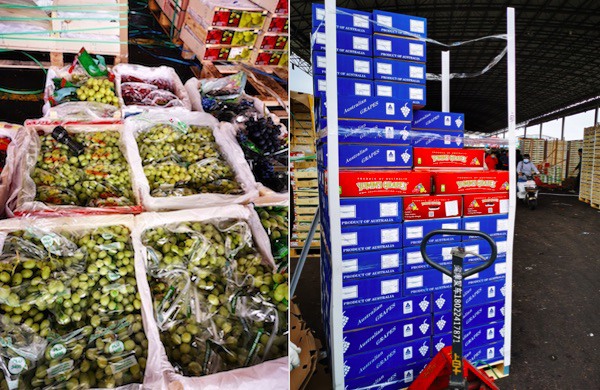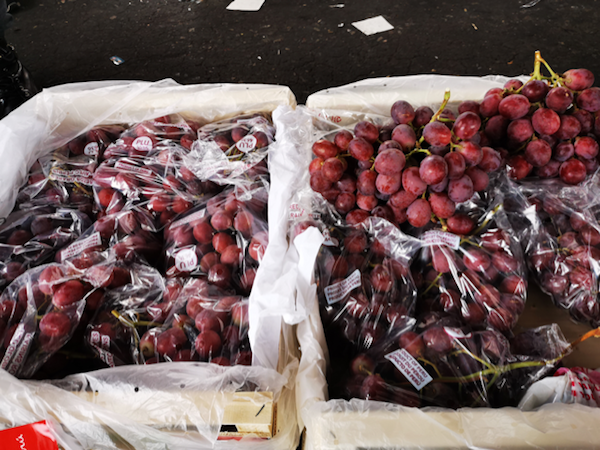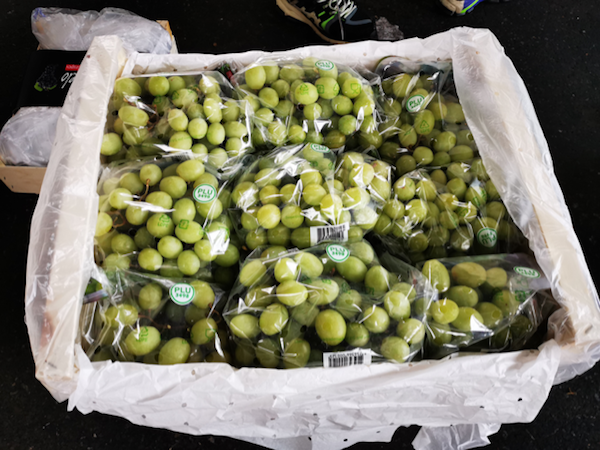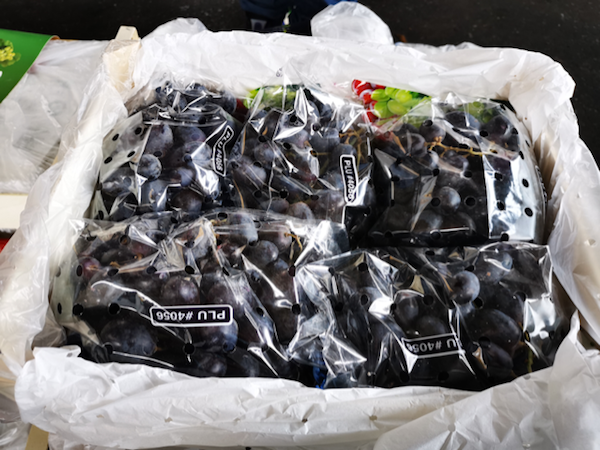Grapes are one of the most important import fruits in the Chinese market. Most of the import grapes in China come from Peru, Chile, and Australia. This is the time of year when supply from Peru dominates. The prices of import grapes, and Chinese market demand for import grapes, both fell in the period after Chinese Spring Festival [1 February, 2022]. At the same time, as for so many fruit varieties, distribution remains challenging. Several grape importers recently shared their insight in the market.

This is the peak period of the grape production season in Peru and so the Chinese market is dominated by Peruvian grapes, including green grapes, red grapes, and black grapes. The percentage of green grapes among the import grapes is relatively high, and compared to red grapes and black grapes their product movement proceeds smoothly. Peruvian grapes generally enter the Chinese market in December and supply continues until late February in the subsequent year. Then the supply season of Chilean grapes begins in March and continues until June.

Grape prices are falling, and market demand is relatively weak. Take the price of Peruvian red grapes as an example, an 8.2kg box of grapes costs around 150-180 yuan [23.67-28.40 USD], which is 30%-35% less compared to the period prior to Chinese Spring Festival and this price is expected to remain stable in the next few weeks. Some grape importers do not expect conditions to improve until Tomb Sweeping Day [5 April, 2022].

At the same time, distribution remains one of the main challenges for traders. Customs procedures have become more complicated due to the ongoing pandemic and the speed of customs clearance is now slower, which puts a lot of pressure on the containers at customs. A single container can often be delayed by around 14 days, and that used to be only 2-3 days. Not only is the supply volume of grapes smaller than usual because of these delays, but their product quality suffers as well.
"Foreign fresh-keeping technology is quite advanced, so even when individual grapes are rotten, the bunch is not affected too much, but when delays take too long, the general product quality and flavor will suffer," explained one grape importer.

In addition to the dominant Peruvian grapes, the Chinese market also sells red grapes imported from Australia. The Australian red grapes recently entered the market, and some grape importers state that the firmness and sugar content of Australian red grapes is better than Peruvian grapes. The Australian grapes are crisper, and their product quality is better because the shipping time is shorter.
